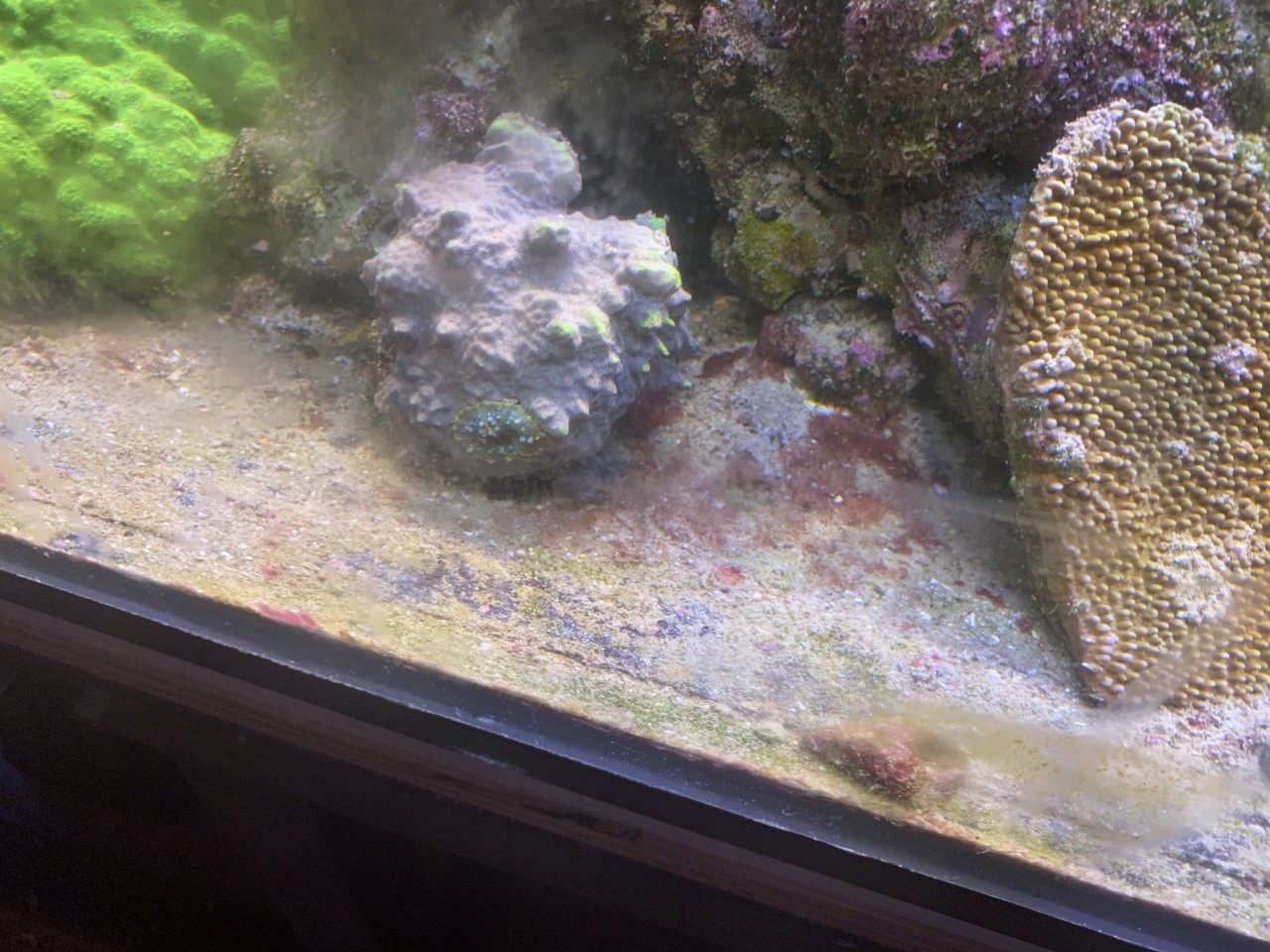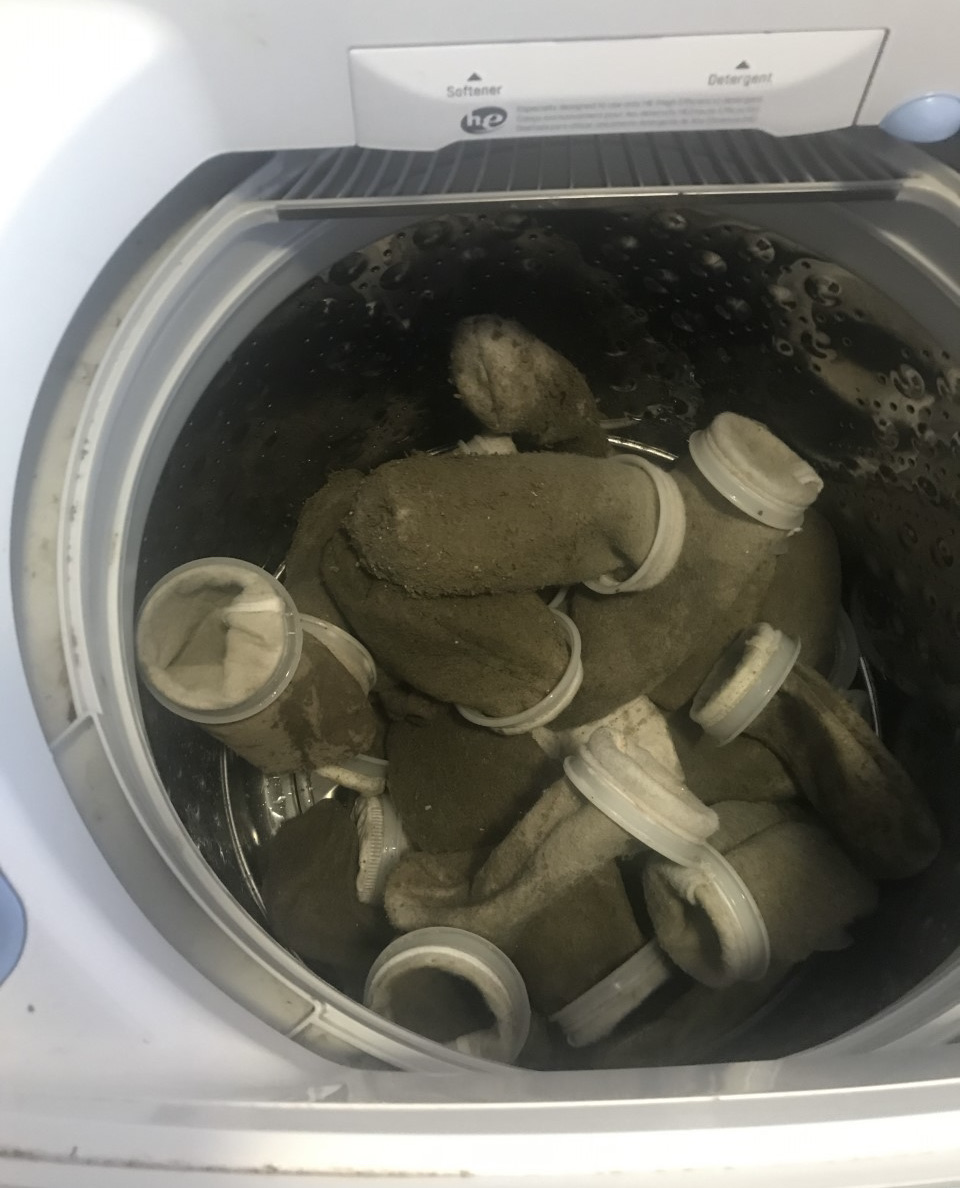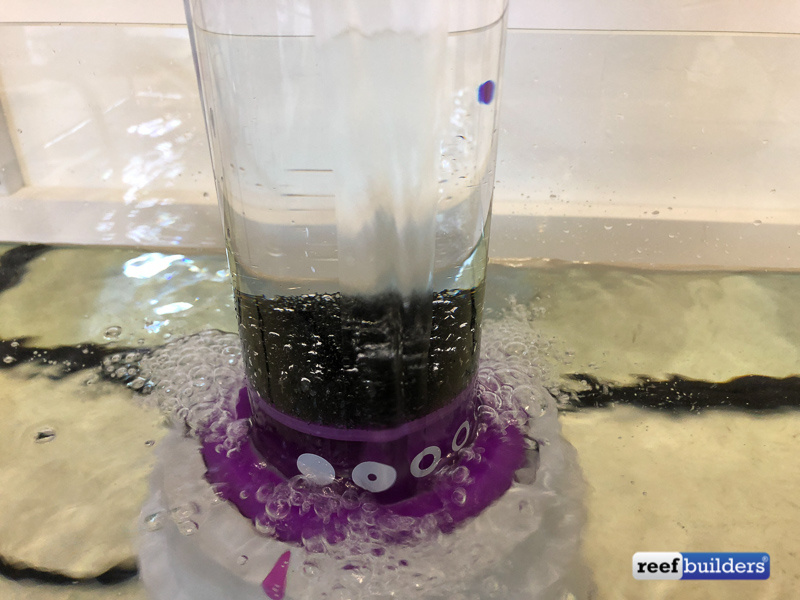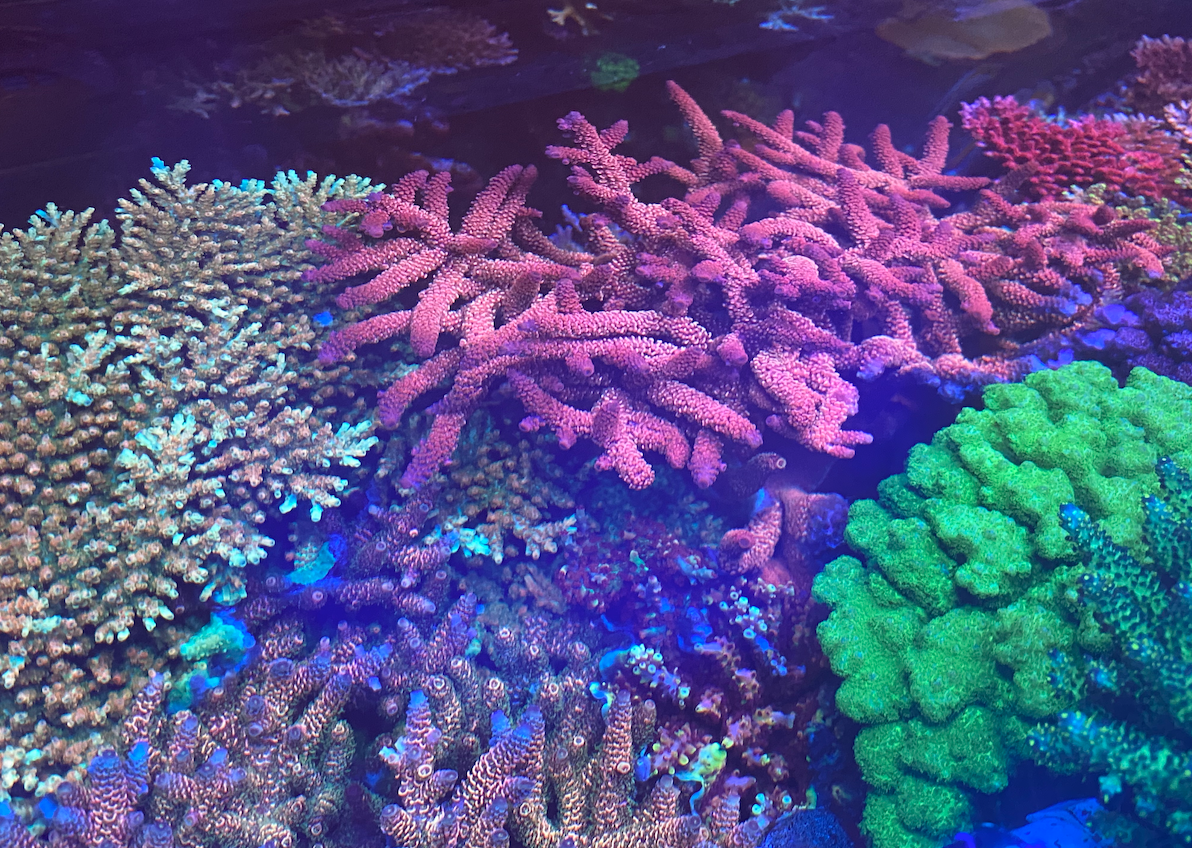Back when I started keeping fish, filtration consisted of angel hair or glass wool as the mechanical filtration and charcoal as the chemical filtration. Now there are a multitude of ways to perform these types of filtration, but rarely are their merits or shortcomings discussed.
Instead, the main focus is on protein skimming, probably as a result of there being significantly more marketing of protein skimmers than other forms of filtration. This is unfortunate as when done properly mechanical and chemical filtration are still fundamental aspects of filtration and are crucial for the long-term success of a reef tank. When neglected, these types of filtration can produce negative consequences for a reef tank and its inhabitants. But when done right each type of filtration helps the other types of filtration work better and makes the tank more successful over the long term.

Mechanical filtration
As its name implies, mechanical filtration utilizes some mechanical means be it filter socks, filter floss, or polyester filter pads to trap waste material in its matrix. While chemical filtration removes dissolved proteins and organics before they have a chance to decompose usually by absorbing or adsorbing them into the compound being used which is usually some form of carbon. It does so when they can’t be removed by chemical filtration.
As the hobby has advanced and bigger and better skimmers methods have come on the market, the need for strong mechanical filtration and detritus and other particulate removal has seemingly been forgotten. This may in part be the result of the notion that a good skimmer will remove everything bad from the water when the reality is that even the best skimmer will only remove 60-70% of the bad material from a given tank. This then leads to the reality that something needs to be done to remove the bad material that is left. This is where mechanical and chemical filtration comes in. Despite having two of the best protein skimmers on the market in operation on my tank, the water in my tank still was not as “clean” as I would have liked, and remained so until I realized that the tank was lacking good mechanical and chemical filtration.
Evidence of this was the amount of detritus and particulates in the water being problematic despite moderate mechanical filtration being employed. This was especially noticeable when the flow in the tank was at its maximum and pictures were taken. During the pandemic, I ran a number of experiments on my tanks in the seemingly endless quest to make things better. Some of these did, while others were flat-out failures. But of these, one of the most impactful experiments was when I improved the mechanical filtration and started regularly cleaning off the live rock. Before these improvements, several problems occurred including frags dying from the base, or cyanobacteria or dino outbreaks occurring randomly. And when dead spots in the tank were found, invariably there were areas where these cyanobacteria outbreaks would start.
To try and reduce these high nutrient areas from occurring, the live rock would be flushed with a turkey baster regularly. During this time, filter socks were employed for mechanical filtration and they would be changed once a week or so. Needless to say, this was at best a modest amount of mechanical filtration, as the socks were a hassle to clean, so they invariably would become plugged up, so most of the water flowed over them rather than through them. Similarly, only flushing the rock once a week really did not help reduce much of the detritus that rapidly accumulated on them. This was obvious in that when the live rock was flushed a detritus “snowstorm” immediately occurred in the tank. Due to their becoming plugged quickly and the difficulty in cleaning them, filter socks are my least favorite form of mechanical filtration.

To improve this mechanical filtration and detritus removal, several means were employed. First, dual-size polyester pads with 5 and 1mm pores were wrapped around the overflow pipes to remove as much free-floating detritus as possible. Initially, these were changed only once a week and then cleaned with a hose, but the amount of detritus and smell from them made it necessary to change them more often. First, it was every three days and now it is every other day. This more frequent changing not only allows for more efficient detritus removal but now that the detritus is not as deeply embedded in the pads they can be flushed in the sink rather than with a hose. This has to be done right after they are removed as the material embedded in them starts to decompose soon after they are removed from the water and the smell produced if they are not cleaned quickly is quite repugnant.

While this mechanical filtration improved the amount of free-floating detritus in the tank, there were still some very fine particulates that this filtration missed. In order to remove this fine material an old-school power filter was employed. This filter is simply a powerhead to which a perforated tube is attached to the intake, with the tube covered by floss and the strong siphon from the powerhead draws in detritus-laden water which is filtered by the floss. As the floss gets dirtier and dirtier the pores get smaller and smaller so over time this filter draws in and removes even the finest particulates from the water. Like the other mechanical filters I employ, this filter is changed regularly, at least once a week, and its use along with the other mechanical filtration has significantly improved the water’s clarity.

Roller filters
The last form of mechanical filtration that I have used is the new “roller” type of mechanical filtration. In this type of filter tank water flows over and through a thin polyester pad trapping detritus as it flows through the material. As the material becomes clogged with detritus the water level in the filtration chamber rises and once it reaches a certain level it triggers a float switch which advances the roll. In this way, a clean detritus-free filter constantly moves along to clean the water. This device works well on smaller or low-bioload tanks, but on big tanks, it can become clogged very quickly with the filter rolls being exhausted quickly as well. But on appropriate-sized tanks, they are an excellent mechanical filtration choice.
Chemical filtration
Like its name implies chemical filtration uses a chemical means to extract waste material from water. Most include carbon in some form, but they can also include resins and zeolites. While we all try to do our best and are constantly trying to make our tanks “better”, we can fall into the trap of forgetting how some of the simple and seemingly mundane aspects of the hobby can make a difference. Salinity, pH, and adequate mechanical filtration are three aspects of the hobby that I have found when managed properly can greatly improve what I thought was a successful tank.




